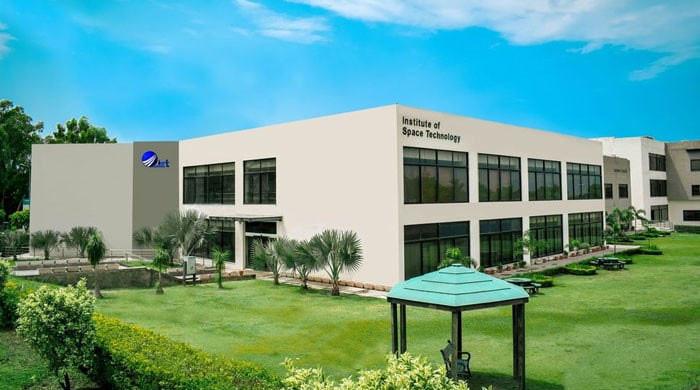Pakistan launches its first lunar orbit mission tomorrow

Source: The News International
ISLAMABAD: The Institute of Space Technology (IST) would launch a student cube satellite 'ICUBE-Qamar' (ICUBE-Q) into the lunar orbit aboard China's Chang'E-6 Mission from Wenchang space launch site, Hainan in China at 1250 PST, on Friday, May 3, 2024.
The launch activity would be telecast live on IST website as well as Institute's social media accounts. The opportunity to release Cubesat in lunar orbit from Chang-E'6 mission was offered by China National Space Agency (CNSA) through Asia Pacific Space Cooperation Organisation (APSCO) to APSCO member states. After thorough evaluation, Pakistan's proposal was accepted out of all APSCO member states. Design, development and qualification of ICUBE-Q has been led by faculty members and students of the IST, in collaboration with China's Shanghai Jiao Tong University (SJTU), and support from the Pakistan National Space Agency SUPARCO.
The ICUBE-Q has two cameras as payload for imaging lunar surface. The IST is a federally chartered university that pioneered the development of Cubesats in Pakistan by launching its first Cubesat "ICUBE-1" in low earth orbit in Nov 2013. Keeping this remarkable launch in mind, The News got an opportunity to interview Project Head ICUBE-Q Prof Dr Qamarul Islam. Excerpts from the exclusive interview in the question, answer format are as under:
Q: What specific expertise or experience do you bring to this lunar satellite project?
Answer: I have more than 25-year international experience of space industry and satellite operators in Europe, Middle East and North America. In terms of Cubesat satellites, we initiated design and development of Cubesats and launched our first Cubesat ICUBE-1 on Nov 21, 2013 in 600-km low earth orbit (LEO)
Q: How do you envision collaboration with China, impacting the success of the mission?
Answer: In the past two decades, China is the most successful country in carrying out lunar missions. Our close collaboration with the Chinese teams have ensured that all the technical and operational aspects have been thoroughly covered in design and qualification of all subsystems for the successful mission.
Q: What unique challenges do you face in launching a satellite to the moon compared to other space missions?
Answer: Lunar mission is different in many ways. It requires many customisations of design and development to ensure compatibility with the lunar orbiter. To develop interface and separation mechanisms that meet stringent requirements to minimise any kind of risk to the main mission and ensure success of the mission. Five-day ride to the moon also posed thermal challenges. Weak or almost non-existent magnetic field of the moon prevented use of magneto torques, which we feel on earth for attitude control. In addition, radiation levels are higher at the moon orbit, which reduces the life of the electronic components and can cause problems in computer memory devices data. In addition, the moon gravity model is different, which requires to work out the orbital dynamics accordingly.
Q: How do you plan to ensure the satellite's reliability and functionality in the lunar environment?
Answer: Reliability is ensured on component level, subsystems level and overall satellite operational level. Redundancy is built to avoid single point failures and conduct failure mode effect analysis. Qualification testing is done in thermal vacuum chambers, EMI/EMC tests, vibration tests and many such tests are part of procedures to ensure the required reliability.
Q: What role do you see the international collaboration playing in the future of lunar exploration and space exploration in general?
Answer: We would like to be part of the future lunar exploration and this successful endeavour would pave the way of many future international collaboration that will be beneficial to our younger generation in their motivation to carve a place in space research in the country and humanity in the broader perspective.
Q: Would there be any language barriers in working with Chinese counterparts?
Answer: China National Space Agency (CNSA) has many international collaborations and nowadays translation tools for text and speech have made things much easier to communicate. We did not face any daunting task due to language barrier when working with Chinese counterparts.
Q: Can you outline the key milestones and timeline for the satellite project?
Answer: Our initial design and proposal submitted in early 2022, followed by detailed design discussions and reviews, which resulted in the preliminary design review (PDR) in mid-2022, followed by critical design review (CDR), engineering model development and qualification before embarking on flight model development over the total span of two years with many parallel activities for interface, compatibility and deployer tests as well as integrated tests.
Q: What safety measures are in place to prevent any mishaps during the satellite's launch and operation?
Answer: Safety is of prime importance for each step of the space system development activity. The processes are defined with minute details to prevent accidents. Proactive measured are adopted to reduce risk while conducting project activities.
Q: How will data collected from the satellite contribute to scientific knowledge and exploration efforts?
Answer: The data collected will add to the knowledge currently available. Data will be shared with researcher to conduct analysis.
Q: What are your long-term goals or aspirations for this collaboration and the broader field of lunar exploration?
Answer: This is our first step in lunar exploration with orbital operation and imaging. In future, we foresee further collaboration that would include Lunar landing and robotic missions, in addition to orbital missions
Q: Is the IST the only space institute that has collaborated internationally with any space exploration.
Answer: In the area of space science, there are other Pakistani universities conducting research. However, the IST is the only university to design, develop and launch Cubesats in low earth orbits and also forged international collaboration for a lunar mission.
Q: What significance would the IST have locally and internationally after the launch of the lunar satellite?
Answer: There are very few universities in the world which have led a lunar mission. This definitely gives the IST an advantage in doing collaborative work with local and international universities.
Q: Would it be monitored from both countries or it would be based in Pakistan only?
Answer: Pakistan stations in Islamabad and Lahore will receive telemetry data and send telecommands for the operation of the satellite through Chinese deep space network owing to large distances involved.



